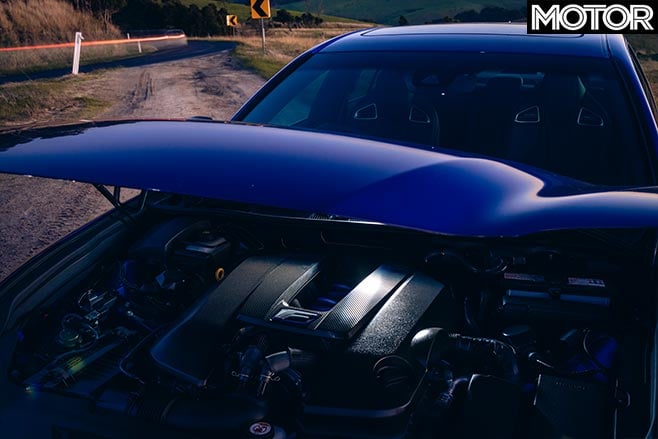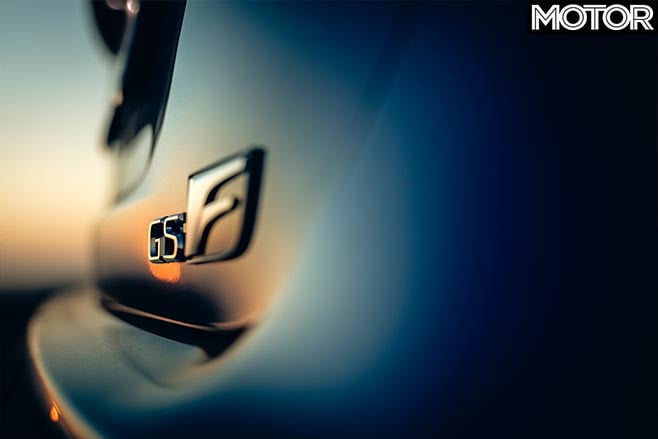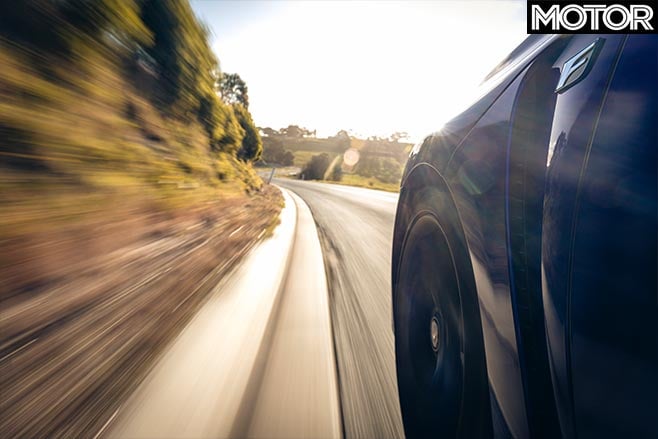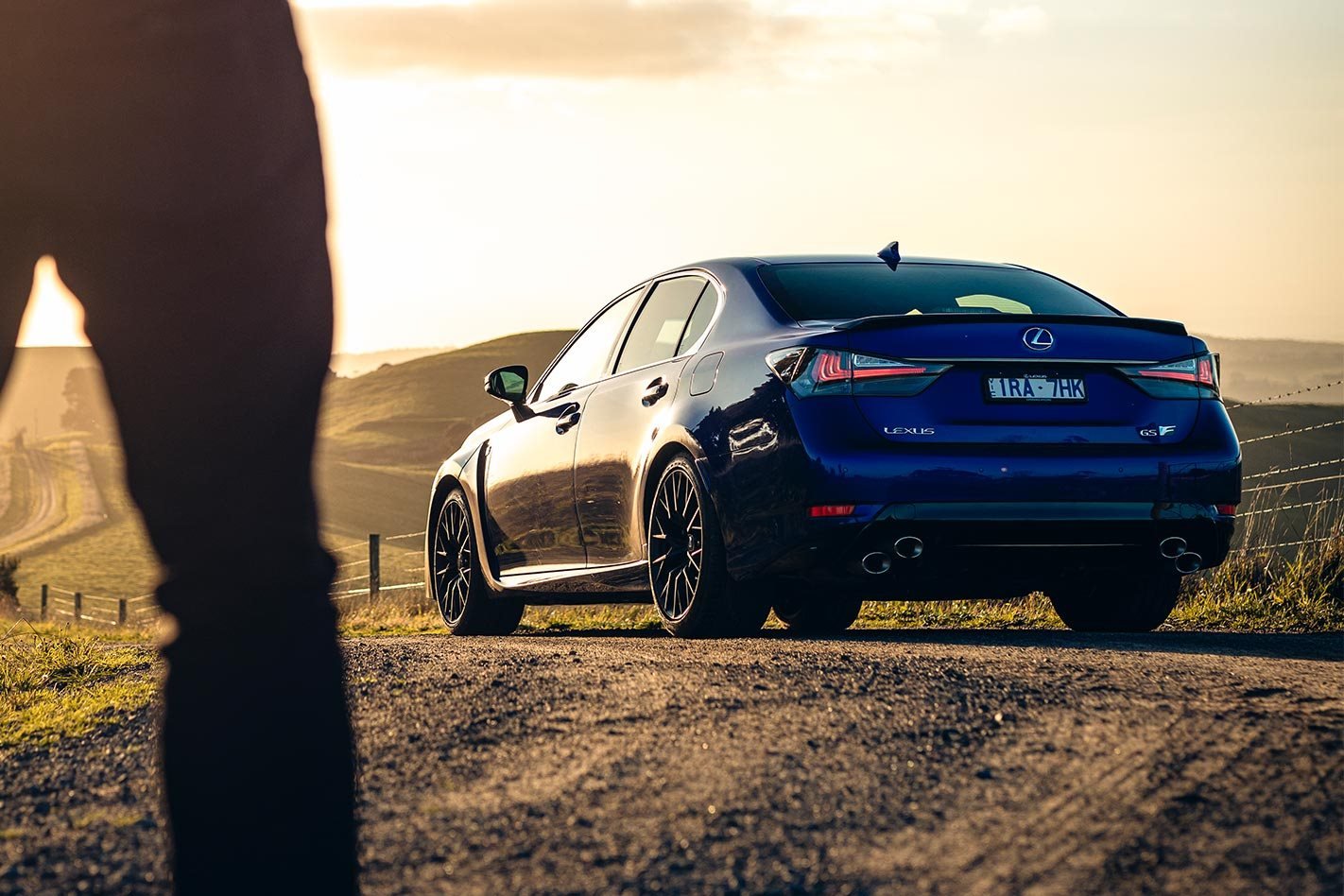It feels a bit weird to farewell a car. While sure, new things will roll down the production line in its place, and the berks working at the local dealer no longer have to remember all the specs, if anything it means the car is now more likely to be celebrated and appreciated.
All the cars bought by the high-flyers on the treadmill of life, only to be flung three to four years later, fall into the hands of those who wanted it new but couldn’t afford it. They’re the ones more likely to put it in a garage, fuss over the paint, service it more frequently than the ever-lengthening intervals and use and appreciate all the engineering. Including driving the ring out of it.
I can only hope that’s the fate of 1RA-7HK, the Cobalt Mica Lexus GS F we have in our hot little hands today. Launched in 2010, facelifted in 2015, the GS F is not a new car – this ain’t a first fang. In fact, the last one is due to roll out of Toyota’s Tahara plant in Japan as imminently as next month (August 2020), prompting this last blast before the GS F is forever consigned as browsing fodder for our online car classifieds habit.
New stock still exists, Lexus Australia assures us, and one should very much consider purchasing a GS F unsullied by a previous owner while they still can because it’s truly one of MOTOR’s favourite cars. It’s kind of hard to put our finger on why exactly, but that’s the purpose of this story.
Looking under the bonnet is not a bad place to begin. It’d be unfair to say the GS F would be an undesirable car with something like a twin-turbo V6, as it would certainly be a lot faster, but an atmo 5.0-litre V8 has a certain allure about it no matter the maker, and the GS F’s is a good ’un. Despite an appetite for revs, the 2UR-GSE is basic by 2020 standards – not least because it was first introduced in the IS F in 2007 – but it’s no less of a wonder.

A Yamaha co-developed aluminium-alloy cylinder head, packing twin overhead lobe-sticks and titanium inlet valves, is bolted to a cast aluminium block. Forged conrods connect alumnium-alloy pistons to a forged steel crank, while a 94mm bore and 89.5mm stroke make for a slightly oversquare design – and more revs than your shit-of-a-neighbour’s two-stroke hedgetrimmer on a Sunday morning.
To get from the IS F’s original 311kW to the current 351kW (cool number, that), Lexus fitted lighter pistons and a crank with lower reciprocating mass, allowing maximum revs to be upped from 6800rpm to 7300rpm. Compression also lifted from 11.8 to 12.3:1 and a larger 83mm throttle body was fitted, for peak power at 7100rpm and 530Nm from 4800-5600rpm.
In the GS F the 2UR-GSE is mated to Toyota’s trusty AA80E transmission, even if archaeologists are not far from digging up the earliest produced examples given it dates back to 2007. At the time it was the world’s first automatic with eight speeds, and it’s telling how cutting edge that was for the time given eight speeds still more than flies today.

Power reaches the rear wheels via a more advanced yet still relatively rudimentary active differential. We’d think it beaut, until Lexus gave us cause to wonder when it binned it in place of a simpler Torsen unit for the RC F Track Edition, supposedly saving 35kg.
Meanwhile the GS F’s front end is of the double wishbone variety; the rear-end multi-link with forged aluminium arms. For its size – huge – the GS F is a reasonable 1865kg.
From the outside the GS F is modest about what lies within, looking big, boxy and long – but undeniably cool. Moving away from the front end as quickly as possible is best advised, to the rear three quarter – definitely the GS F’s best angle, sitting low with a mean stance on those purty, staggered 19-inch wheels.
Impressions: Our 2017 quick drive in the Lexus GS F
Inside the GS F is an unusual mix of functional Toyota and Lexus luxury. Build quality feels so solid you’d happily drive one into battle, matching or besting anything from the Germans and like it would do half a million kays without a worry because it probably would. The seating position is good, even if the steering wheel weirdly tilts slightly away from you. The seats are as good to sit in as they are to look at. Noise insulation would rival a mausoleum and the pile of the almost excessively plush floor mats is so deep you could easily lose things in them – phone, wallet, a kid – never to be seen again.
The interior is where the GS F has lost the most ground on its rivals, though. The much-lambasted infotainment system, with its odd magnetised ‘mouse’ selector, is up there with the most annoying things I’ve ever used. Lexus doesn’t offer Apple CarPlay or Android Auto but fortunately the aftermarket does.
Hit the dash-mounted starter button and the 5.0-litre awakens with a tailpipe note sure to draw nods of satisfaction from any V8 purist. Dragging the auto shifter from Park to Drive however is about a sensual as stacking a dishwasher, straight out of a 2010 Toyota LandCruiser. While pleasantly smooth the sometimes strangely loud transmission has the exact urban character as any appliance-spec Toyota.

Throttle tip-in in Comfort mode is a also bit dopey, but the brake pedal is lovely and direct. And there’s a huge amount of standard equipment – keyless entry, sunroof, electric boot, head-up display, radar cruise (actually comically terrible at keeping speed down hills; also the low-beam is dreadful), heated/cooled seats, heated steering wheel, electric seats, 17-speaker sound system, automatic lights, wipers… what else could you want? This is a very comfortable, easy car to drive daily. The ride quality on the adaptive dampers (fitted in the most recent facelift) is also wonderful if you ever knew the comfort of the previous passive set-up.
Part of the GS F’s charm is its many flaws, most of them to do with age, but that also just makes it all the more endearing. For our swansong blast in what we’d call the most likeable Lexus since LFA, we headed down to Victoria’s Gippsland region, the famed twisting, undulating roads of which are used by another Australian motoring publication for its Car of the Year testing. The fast, open roads are exactly the place you’d want to stretch the legs of a near-5m long sedan with a near-3m wheelbase. Not that the GS F ever feels overly large; at 1.8 metres it’s not excessively wide. It’s just long.
When it finds itself on a twisty bit of road the GS F offers up four driving modes accessible through an Kingston-sized selector near the shift lever. Eco (which you can forget about), Normal, Sport and Sport Plus all change the digital tachometer design in cool ways and tweak throttle, transmission shift speeds and damping stiffness.
Lexus RC F and GS F Anniversary editions
There’s also a very basic individual mode which lets you combine a saucy engine with softer dampers if you wish, but you probably won’t really want to given the closeness of the damping modes, all of them very compliant. Sport Plus is the only mode you can use the superbly judged reduced Expert ESP.
Put your foot down in the GS F and you’ll get plenty of rear tyre scrabble if the surprisingly temperature-sensitive Michelin Pilot Super Sports are cold, but once they’re warm traction is ample, the linear power delivery and comparative lack of low-down torque giving the rear 275-section rubber a fighting chance. Torque builds gradually before about 3600rpm where the 2UR-GSE lights the wick and charges hard to its heady power peak and limiter.

Lexus claims the GS F will do 0-100km/h in 4.6 seconds but the fastest we’ve ever got from one is 4.99sec (and a 13.09sec quarter mile). For acceleration the GS F is about a decade behind its rivals; compare that to the BMW M550i xDrive featured elsewhere in this issue, $20K cheaper and capable of 0-100km/h in 3.6sec…
The numbers sell the GS F short, however. In isolation, and owing to the loud, obviously enhanced intake noise booming up from behind the dashboard, it feels a lot faster than it is. That’s unlike other performance sedans where it’s almost the other way around. This is probably to its credit.
Lexus GS F at Performance Car of the Year 2017
While not the last word on feel the steering rack is nicely tight off-centre, weights up as you’d want and is well judged for speed relative to the long wheelbase, fast enough to make the front end easy to place, backed up by those sticky Michelins. A small amount of understeer is present as you near the fairly lofty limits of the Michelins, easily converted to oversteer with the throttle but with care, as when the rear end breaks away you very suddenly reminded of just how much car is hanging out behind you. It’s easy to forget.
In the sportier modes the transmission is like an 85-year-old that’s had too much ouzo at its great-grandson’s wedding: it still knows how to boogie, shifts cleanly and fairly quickly and is a good match for the engine and the greater car. Also not that we’d want to try them on a track but the brakes are also tops.

For its age, and size, the GS F has no right to be as fun as it is. It has a bit more grip than it does power so to get the best out of it requires driving the absolute nuts off it. Which it seems to enjoy. And it has that increasingly rare quality in a new performance car – it wants to please. And it does.
At the end of our drive we’re a bit at a loss how to feel. It’s sad to be bidding adieu to a car as enthusiastic and up for it as the GS F, but also, it might end up being the antecedent to something even more memorable. Unlike in Europe where the V8 seems to be getting read its last rites, Toyota Gazoo Racing has confirmed the 2UR-GSE will be replaced not with a twin-turbo 3.5-litre V6 – as was presumed, the new one that’s in the LS500 – but with a 4.0-litre twin-turbo V8, one with we estimate more than 400kW. Hallelujah! Originally slated for debut in the LC F super sports car (which apparently is on pause because of COVID), it’s still possibly a few years off. But even the 2UR-GSE will still continue to do service for some years in the LC coupe, with rumours also that Lexus will shoehorn it into the new IS to create an ‘IS500’ for the 5.0-litre’s last hurrah.
May the V8 torch burn for a good while yet. And it seems the things to roll down the production line in the GS F’s place will very much keep this fast four-door sedan’s spirit alive.

Lexus GS F verdict
Pros: More than sum of its parts; very likeable; thrashable
Cons: Fast for the 2000s; feels a bit Toyota; infotainment
4 stars out of 5
Lexus knows how to V8: Stroked and blown versions of the ‘UR’
What’s Lexus doing buggerising around with a measly 351kW version of this engine? In the USA beginning from the 2007 model year, Toyota took the 2UR-GSE and stroked it to 5.7 litres (5663cc) for use in heavier passenger vehicles (and their, erm, heavier occupants), including the Tundra dual-cab truck-ute-thing, LandCruiser 200 and the Lexus LX570 (which was also sold in Australia).
The new 3UR-FE as it was dubbed produced 284kW at 5600rpm but a meatier 543Nm from a lowlier 3600rpm. It gets better, though. For a time the factory strapped on a TRD Eaton twin-vortices roots-type supercharger for a fairly good 376kW and a very agreeable 746Nm.
For owners who missed out on that, Melbourne-based aftermarket firm Harrop also offers its own 2650cc supercharger which, with a Stage Two 8psi tune, can see power of 385kW and torque of 696Nm (both at the wheels).
Or if you want to take the brain completely out, Pure Performance Motorsport Australia produces another stroker kit that takes capacity to 7.0 litres, although doesn’t state outputs. Crikey!
2019 Lexus GS F specs
Body | 4-door, 5-seat sedan |
Drive | rear-wheel |
Engine | 4969cc V8, DOHC, 32v |
Bore X Stroke | 94.0 x 89.5mm |
Compression | 12.3:1 |
Power | 351kW @ 7100rpm |
Torque | 530Nm @ 4800-5600rpm |
Power/Weight | 188kW/tonne |
Transmission | 8-speed automatic |
Weight | 1865kg |
u00a0Suspension | A-arms, coils, adaptive dampers, anti-roll bar (f); multi-link, coils, adaptive dampers, anti-roll bar (r) |
L/W/H | 4915/1845/1440mm |
Wheelbase | 2850mm |
Tracks | 1555/1560mm (f/r) |
Steering | electrically assisted rack-and-pinion |
Brakes | 380mm ventilated/drilled discs, 6-piston calipers (f); 345mm ventilated/drilled discs, 4-piston calipers (r) |
Wheels | 19.0 x 8.5-inch (f); 19.0 x 9.5-inch (r) |
Tyres | 255/35 ZR19 (f); 275/35 ZR19 (r); Michelin Pilot Super Sport |
Price As-Tested | $160,217 ($155,217 before options) |





